Standards Worldwide
Standards Worldwide
Phone +49 30 58885700-07

Standard [CURRENT]
ASTM C 188:2025
Standard Test Method for Density of Hydraulic Cement
- Publication date
- 2025
- Original language
- English
- Pages
- 3
- Publication date
- 2025
- Original language
- English
- Pages
- 3
- DOI
- https://dx.doi.org/10.1520/C0188-25
Product information on this site:
Quick delivery via download or delivery service
Buy securely with a credit card or pay upon receipt of invoice
All transactions are encrypted
Short description
1.1 This test method covers the determination of the density of hydraulic cement. Its particular usefulness is in connection with the design and control of concrete mixtures. 1.2 The density of hydraulic cement is defined as the mass of a unit volume of the solids. 1.3 The values stated in SI units are to be regarded as standard. No other units of measurement are included in this standard. 1.4 Warning- Fresh hydraulic cementitious mixtures are caustic and may cause chemical burns to skin and tissue upon prolonged exposure. 2 1.5 The text of this test method references notes and footnotes that provide explanatory material. These notes and footnotes, excluding those in tables and figures, shall not be considered as requirements of this standard. 1.6 This standard does not purport to address all of the safety concerns, if any, associated with its use. It is the responsibility of the user of this standard to establish appropriate safety, health, and environmental practices and determine the applicability of regulatory limitations prior to use. 1.7 This international standard was developed in accordance with internationally recognized principles on standardization established in the Decision on Principles for the Development of International Standards, Guides and Recommendations issued by the World Trade Organization Technical Barriers to Trade (TBT) Committee.
ICS
91.100.10
DOI
https://dx.doi.org/10.1520/C0188-25
Also available in
Loading recommended items...
Loading recommended items...
Loading recommended items...
Loading recommended items...
